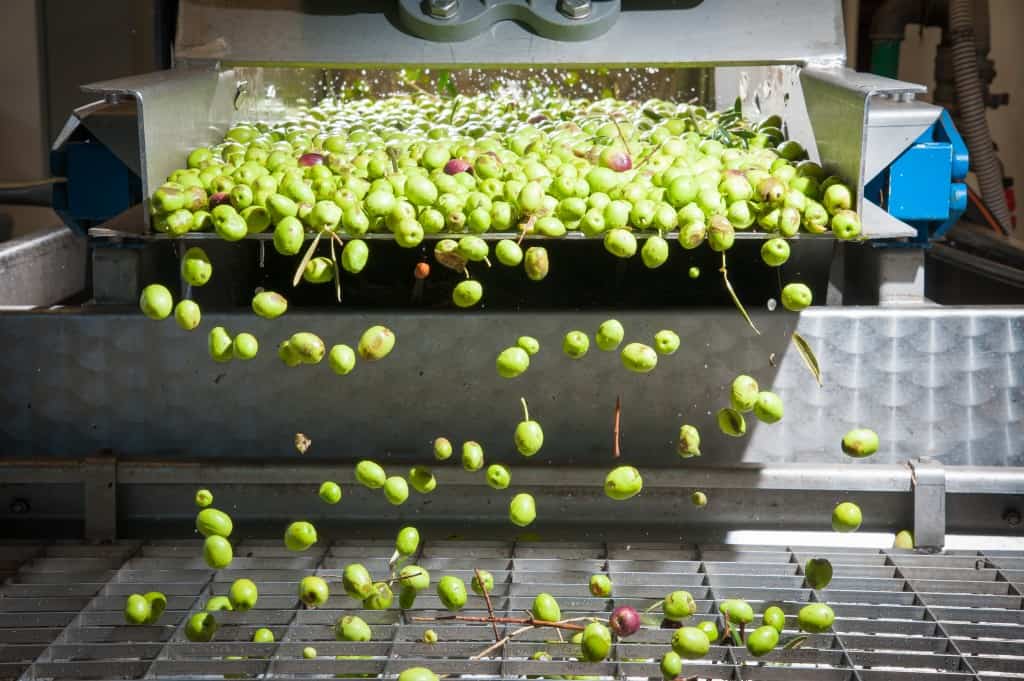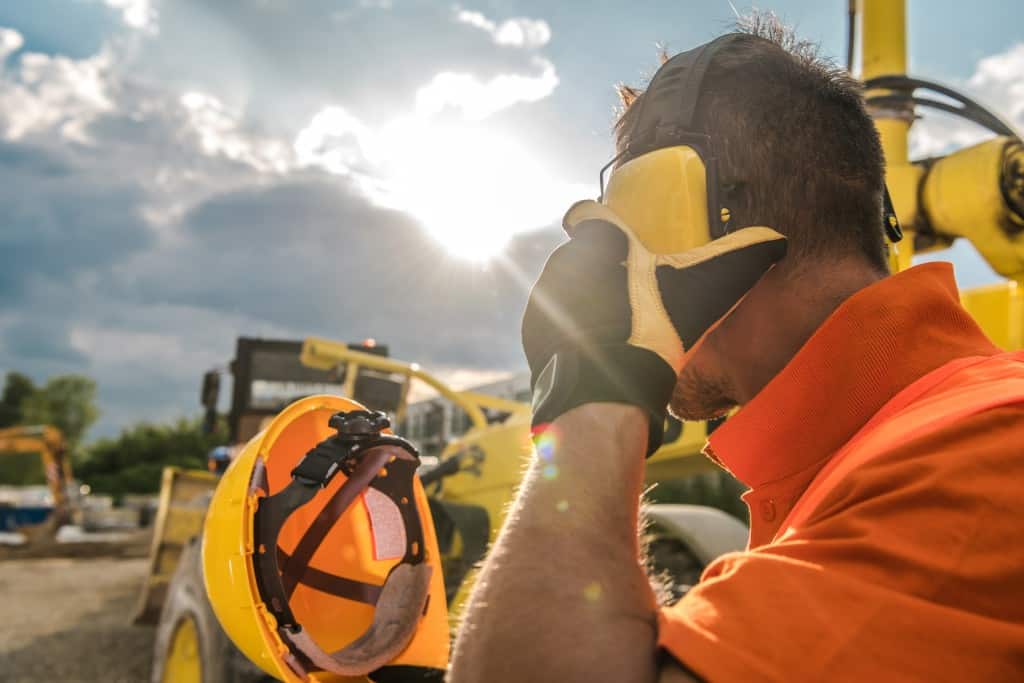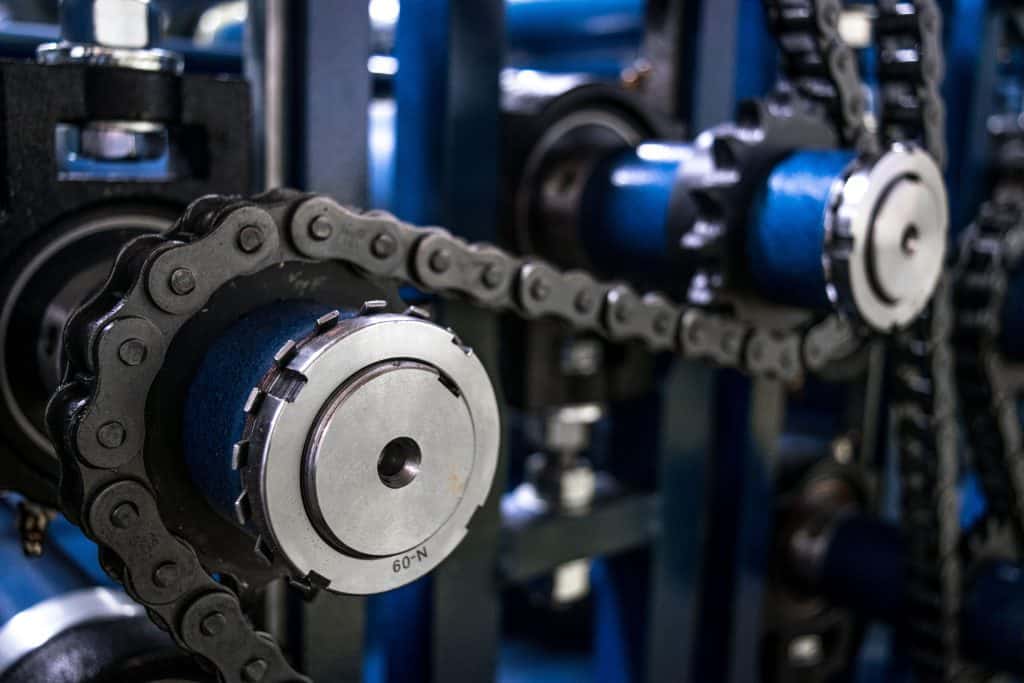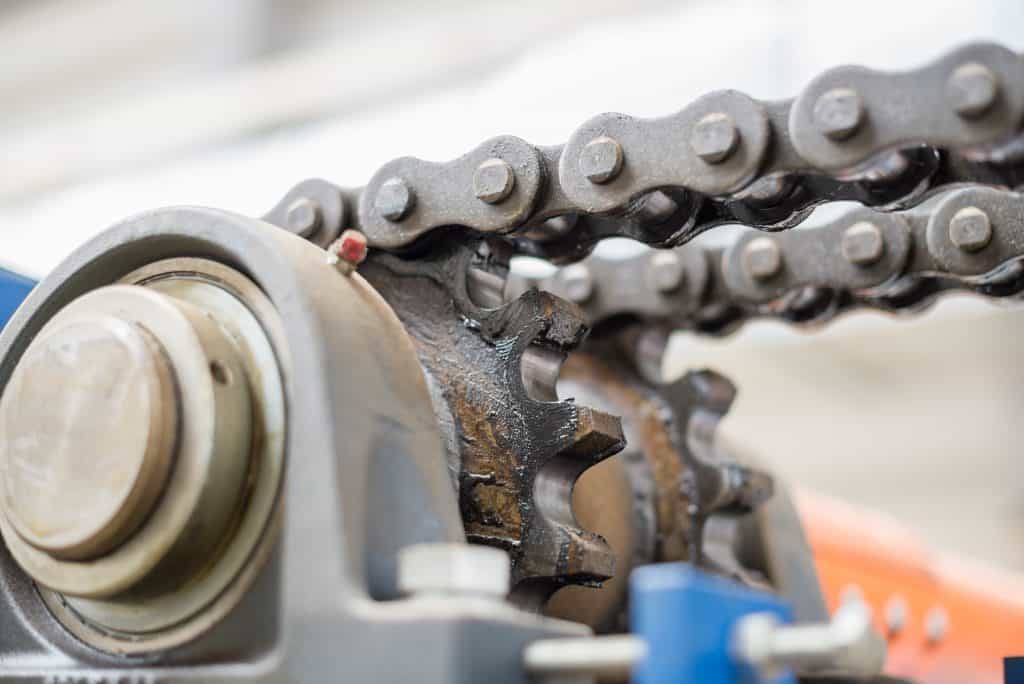Roller Chain Climbing Sprockets? Causes and Solutions

Erratic movement – also known as jumping – is not a desirable trait in a chain drive. With roller chain climbing sprockets, connected components will experience detrimental forces. Sometimes the chain may even climb off the sprocket altogether! Don’t allow a drive to operate if your chain climbs the sprocket!
If your chain “jumps” or “climbs” your sprocket, it is most likely due to one of the following causes. Let’s take a look.
Is your sprocket the problem?
Chain jumping could be a sprocket problem. If your sprockets are too small – or have become worn – they cannot guide your chain correctly.
When operating normally, roller chain engages several sprocket teeth at once and smoothly rolls off of each tooth as it completes the rotation. This movement eventually causes wear to the sprockets on one side of each tooth, giving it a hooked appearance. These hooked teeth cause the chain to cling to them and keep it engaged with the sprocket too long. The chain can no longer smoothly roll off the teeth and will no longer function as intended.
You may also experience problems with chain jumping because of insufficient chain wrap. Typical chain wrap is at least 120° or six teeth on your small sprocket. When the sprocket is too small, there aren’t enough teeth connecting with the chain to move it properly. In these cases, a redesign of the drive is necessary.
Chain-wrap will always exceed 120° when the drive ratio is 3:1 or less. With a larger drive ratio, modify the center distance to maintain sufficient chain wrap. In these cases, the minimum center distance is the difference between the pitch diameter of the large sprocket and that of the small sprocket. Changing your drive ratio with a larger small sprocket or adjusting the center distance are both redesign options.

Finally, we recommend evaluating your sprockets to make sure they are clean. Buildup can occur between the teeth – making it difficult for the chain to properly seat in the sprocket, causing the chain to ride higher on the tooth. In this case, cleaning the sprocket or utilizing a self-cleaning sprocket will resolve the issue.
Is your chain worn?
If the problem isn’t your sprocket, it may be the roller chain. Heavily worn or elongated chains will cease to function properly. When too much slack is present, and the proper tension has not yet been reached, this allows for excessive chain movements during operation. This unwanted movement, which occurs throughout the entire strand, can cause multiple issues, one of which is the roller chain climbing sprockets.
Every roller chain application will require a specific length of chain, but it doesn’t stay that way. All roller chain elongates over time as the pin and bushing material wears down during operation. These two components are continually moving as the chain wraps around the sprocket. The resulting friction wears them down and gradually increases the distance between rollers on a pin link.
The increase in distance between each set of pins is minimal, but when multiplied by every link in the chain, it becomes significant. The maximum allowable elongation is 3% of the chain’s entire length. In applications with the use of sprockets over 67 teeth, drives with fixed center distances, or drives running in parallel, the limit becomes 1.5%. Additionally, chains over 200 pitches are at risk for jumping teeth.

Several factors affect the rate at which your roller chain elongates. Heavier loads will wear your chain more rapidly, as will high-speed drives. The number of teeth per sprocket and the total quantity of sprockets will also have an effect. The length of the chain itself is even a factor. But, the selected method of lubrication will have the biggest impact. Additionally, chain features such as oil ports and those that aid in or improve lubrication will most effectively delay elongation.
Is the chain too slack?
If neither your chain nor sprockets look worn, it’s time to check your chain slack. Manually move the slack side of the chain – usually the span on the bottom – towards the other section of the chain. The distance between where it hangs and where you can move it with your hands is the chain slack.
Typically chain slack should be 4% of the center distance but can at times be as little as 2% depending on drive design. You need less slack if your drive layout is vertical – or nearly vertical – or if it has a long center distance. If the load is very heavy, the drive frequently starts and stops, or is a reversing drive, you also need less slack. Another consideration is the clearance of the chain within lubrication cases, safety shrouds, or other components of your drive.

You can adjust the center distance to increase tension, limiting your chain slack. Afterward, be sure to recheck the slack to make sure it was changed appropriately. A tensioner or idler is another solution for correcting chain slack issues.
Idler sprockets are an additional sprocket used to support the excess roller chain. Fixed center drives can use idlers to maintain tension since adjusting the center distance isn’t an option. To determine the ideal tooth count for your idler sprocket, follow small sprocket guidelines.

Ideally, the idler sprocket will engage the chain drive on the slack side. Idlers should not be used on the driven side because there are more chain articulations under load. If you need to place an idler sprocket inside the chain loop, install it near the large sprocket rather than the small one. The reason for this is to maintain the maximum amount of chain wrap on the small sprocket.
None of this matters without proper lubrication.
Inadequate lubrication is very common in chain drives across all applications. This issue shortens the lifespan of both your roller chains and sprockets and is the root cause of dozens of other problems for your drive.
Lubricating your equipment is one of the easiest ways to keep it functioning well into the future. This is essential. Even a high-quality chain and well-made sprockets will wear excessively and quit working properly without adequate lubrication.
Chain climbing can be prevented with proper maintenance.
The issues that lead to roller chain climbing sprockets stem from wear and tear on those same components. You can avoid these problems with high-quality lubrication and prompt replacement of worn parts. If you rely on manual lubrication, make sure you do it often. If you use a lubrication system, make sure it’s performing well. Lubrication is your first defense against excessive wear on your parts and the multitude of resulting problems.
Looking for more advice to keep your drive running smoothly? Explore more of our Knowledge Base.
Sort by category: Case Studies & Solutions, Installation & Maintenance
Sort by topic: Lynx, Maintenance, Roller Chain




